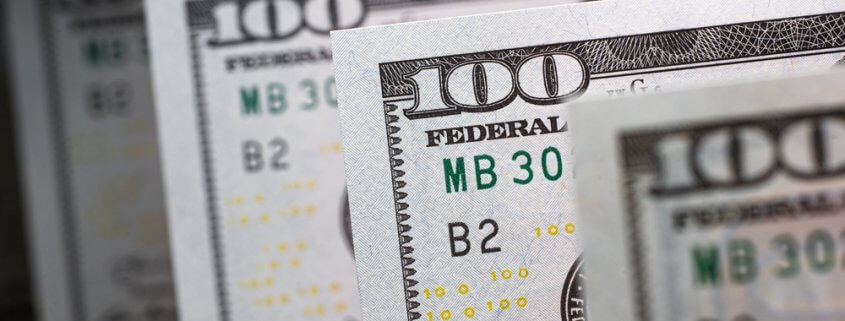Calculating Discounted Cash Flows in Payback Period
Last Updated March 9, 2022
Business owners and project managers use tools like discounted cash flows in the payback period to make fiscally responsible investment decisions. You can determine whether a proposed project is viable with this formula since this formula compares the initial costs involved with the financial returns you can expect to receive.
In this article, you will learn how to calculate cash flows and why this important metric forecasts the profitability of your next project.
What Is the Discounted Payback Period?
The payback period simply measures how long it takes for an investment to generate enough revenue to pay back the initial investment. This capital budgeting method calculates the length of return on investment, and this is done by dividing the total cost of the project by the annual cash inflows.
However, this metric needs adjusting according to each project’s specifics, since each project has its own unique aspects, including different cash flow timing and required rates of return. The discounted payback period approach handles these adjustments. Discounted cash flows conceptualize how today’s dollar will be reduced in value next year.
Using this concept as part of the equation, investors can feel confident when they choose to proceed with a project if the discounted cash flows are generated to cover the initial investment within a certain time frame.
How to Calculate the Discounted Payback Period
Begin calculating the discounted payback period by answering the following questions:
- What is the initial startup cost of the project?
- How much revenue can you expect during a fixed term?
- What is the discount rate?
- How long will you give a project to pay back the initial investment?
The formula for calculating the discounted payback period works is as follows:
Discounted Payback Period = Year Before the Discounted Payback Period Occurs + (Cumulative Cash Flow in Year Before Recovery / Discounted Cash Flow in Year After Recovery)
Example 1
A small farm owner wants to invest in a new seed spreader that costs $250. They expect to make $150 the first year, $200 the second, and $150 the third year on the tomatoes they grow from seed. The discount rate is 10%, and they want to break even on their initial investment within three years. Should they buy the seed spreader?
Before calculating the discounted payback period, you need to figure out the present value (PV) of assets, including the future value (FV), time period (n), and interest rate (i).
The formula for present value is: PV = FV / (1+i) ^n
- Year 0: – $250 / (1+0.10) ^0 = $250
- Year 1: $150 / (1+0.10) ^1 = $136.36
- Year 2: $200 / (1+0.10) ^2 = $165.29
- Year 3: $150 / (1+0.10) ^3 = $112.70
Next, we need to figure out the cumulative discounted cash flows (DCF), based on the previous results. The formula for cumulative discounted cash flow (DCF) is: Previous Year’s DCF + Current Year’s PV
- Year 0: – $250
- Year 1: (– $250) + $136.36 = (– $113.64)
- Year 2: (– $113.64) + $165.29 = $51.65
- Year 3: $51.65 + $112.70 = $164.35
As we can see from the above formula, at the end of the third year, you have only recovered $164.35 of the original $250. Based on this metric, the farmer should not buy the seed spreader because they will not break even within the three-year window.
Example 2
A friend wants to invest $100,000 in the tomato farm. The investor expects the farm to generate $70,000 every year for the next five years and wants to see a return on their capital within that period. With a discount rate of 10%, when will the farmer’s friend recoup their investment?
First, we must establish the present value using the formula: PV = FV / (1+i) ^n
- Year 0: – $100000 / (1+0.10) ^0 = $100000
- Year 1: $70000 / (1+0.10) ^1 = $63636.36
- Year 2: $70000 / (1+0.10) ^2 = $57851.24
- Year 3: $70000 / (1+0.10) ^3 = $52592.04
- Year 4: $70000 / (1+0.10) ^4 = $47945.21
- Year 5: $70000 / (1+0.10) ^5 = $43478.26
Next, we must calculate the cumulative discounted cash flow:
- Year 0: – $100000
- Year 1: (– $100000) + $63636.36 = (– $36363.64)
- Year 2: (– $36363.64) + $57851.24 = $21487.60
- Year 3: $21487.60 + $52592.04 = $74079.64
- Year 4: $74079.64 + $47945.21 = $122024.85
- Year 5: $122024.85 + $43478.26 = $165503.11
The initial investment recovery time fell between Year 3 and Year 4.
Finally, calculate the discounted payback period using cumulative cash flows before recovery and the discounted cash flow in the year after recovery of the initial investment:
Discounted Payback Period = Year before the discounted payback period occurs + (Cumulative cash flow in the year before break-even / Discounted cash flow in the year after the break-even)
= 3 + ($74079.64 / $47945.21) = 3 + 0.8 = 3.8 years
The farmer’s friend who invested $100000 will recover their initial investment within 3.8 years, which is before the Year 5 mark. Based on this metric, this is a viable investment.
Benefits and Limitations of Discounted Payback Period Calculation
The discounted payback period indicates whether or not a project is worth the investment.
The payback period does have its limitations, as it only measures how long it takes for a project’s initial expenditure to generate positive cash flows. It does not take into account the time value of money, which means that waiting longer for a project’s cash flows will reduce the overall attractiveness of the investment.
Payback Period vs. Discounted Payback Period
The discounted payback period is substantially the same as the standard payback method, except that discounting cash flows accounts for the changing time value of money.
When people think of the value of money changing, the term that most often comes to mind is inflation. Consider the discount rate as the overall change between one monetary amount over two points in time. Think of the discount rate as the difference between the two values. With a discount rate of 10%, for example, a dollar today will be worth ninety cents next year.



